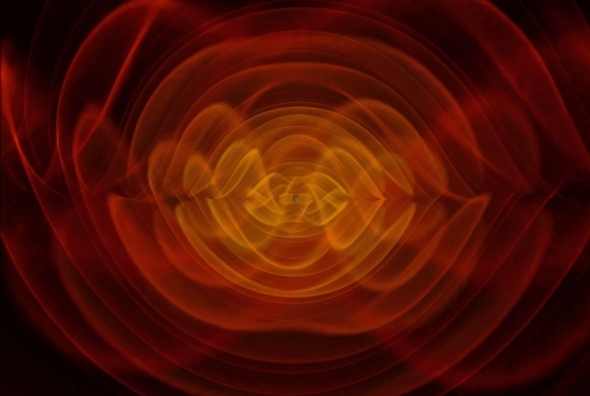The Future of Gravitational Wave Astronomy

A simulated view of gravitational waves rippling out from merging black holes. The reddish waves correspond to those recently detected from a real black-hole merger by the Laser Interferometer Gravitational-wave Observatory (LIGO).
Credit: NASA/C. Henze
The Future of Gravitational Wave Astronomy
Fully opening this new window on the universe will take decades—even centuries
By Lee Billings on February 12, 2016
A century ago, when Albert Einstein first predicted the existence of gravitational waves—subtle ripples in spacetime produced by massive objects hurtling through the cosmos—he also guessed they could not ever be seen. Though the echoes of distant celestial symphonies must ripple through the very fabric of reality, Einstein thought their ethereal harmonies were destined to remain eternally unheard.
On Thursday, scientists using the Laser Interferometer Gravitational-wave Observatory (LIGO) proved Einstein both right and wrong, announcing their detection of the first note in a cosmic symphony he predicted no one would ever hear. It was a burbling chirp of gravitational waves produced by the cataclysmic birth of a black hole from the merger of two smaller ones. Emitted in a distant galaxy when multicellular life was just beginning to populate the Earth, the waves traveled at the speed of light for more than a billion years to at last wash over our planet last September, taking just seven milliseconds to traverse the distance between LIGO’s twin listening stations in Louisiana and Washington State.
Now, unlike Einstein a century ago who could scarcely imagine gravitational waves ever being seen, the scientists hunting the elusive spacetime ripples already have big plans for more detectors and observatories in the near and far future.
“Imagine light having never been collected in a photograph,” says Janna Levin, an astrophysicist at Barnard College of Columbia University and author of a forthcoming book about LIGO. “The first thing people want to do is just to capture the recording, which is what LIGO has done.”
See full text